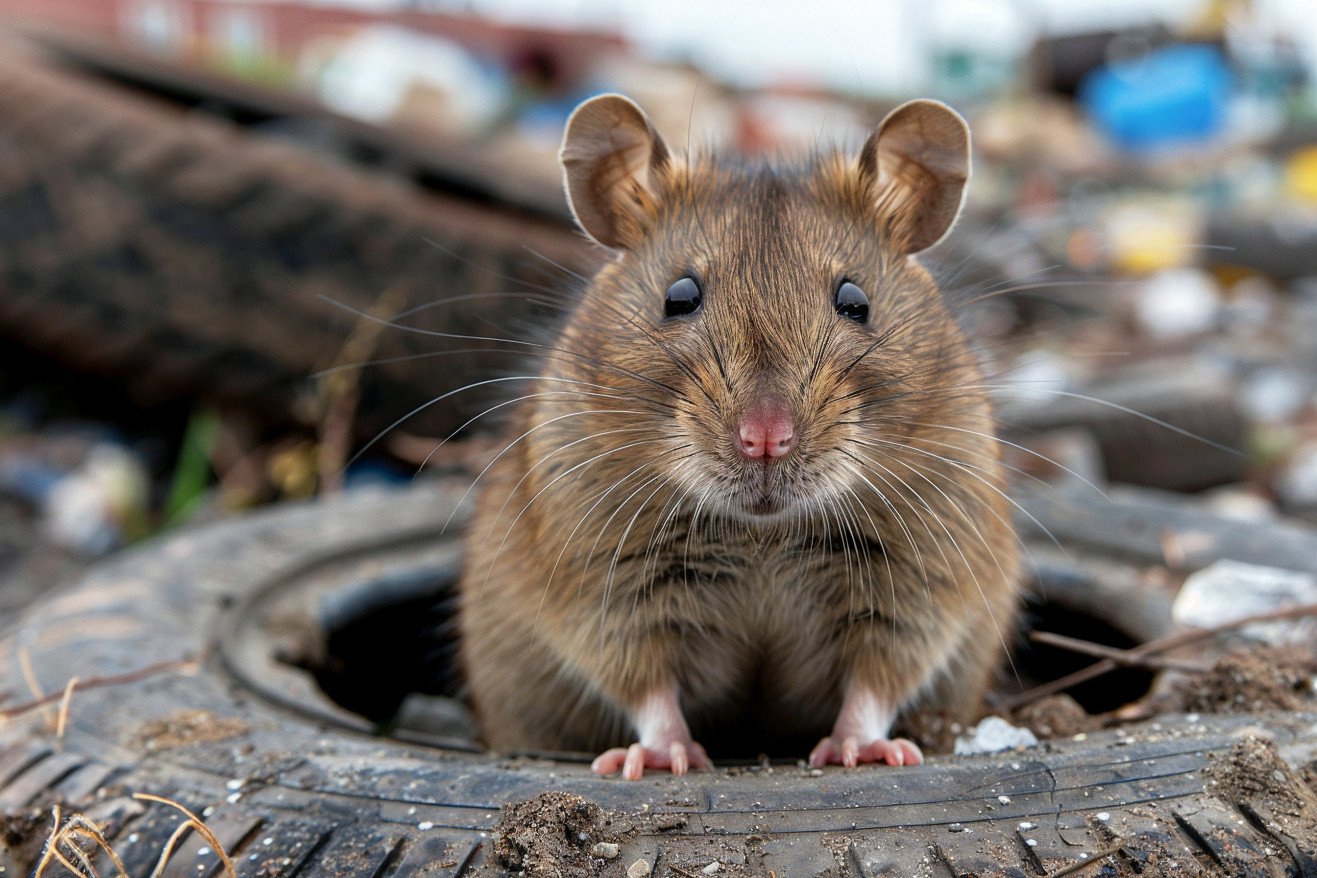Where Do Rats Live? Exploring Their Diverse Habitats
29 May 2024 • Updated 27 May 2024

Rats are highly adaptable creatures, and their habitats range from urban to rural, reflecting the animals' own adaptability. In general, rats live in places that offer food, water, protection from predators, and a safe place to nest. This can include basements, attics, sewers, under concrete slabs, woodpiles, gardens, cropfields, riverbanks, and dense vegetation.
To explore the many habitats that rats can live in, we will look at information from field research, urban ecology studies, and zoological analyses. Together, these studies show how rats' adaptability and opportunism have allowed them to find homes in a variety of places, from the most run-down urban environments to the most idyllic rural ones.
Where do rats live?
Urban Environments: Adapting to City and Suburban Life
Rats are highly adaptable and can easily thrive in urban and suburban environments. Common urban rat habitats include sewers, storm drains, dumpsters, alleys, basements, and abandoned buildings. Rats are drawn to these areas because of the easy access to food, including garbage, pet food, and food waste.
The two most common rat species in urban areas are the Norway rat and the roof rat. Norway rats are more likely to burrow and nest near the ground level of buildings, while roof rats prefer elevated areas like attics and trees. Knowing these different nesting habits is important for effective rodent control.
To prevent rat infestations in urban areas, sanitation, exclusion, and habitat modification are all important. This includes keeping food in tightly sealed containers, keeping living spaces clean, sealing cracks and holes in buildings, and removing debris and clutter that rats can use for nesting. When rats are denied access to food, water and shelter, they are less likely to thrive in urban environments.
Rural Rat Habitats: Fields, Farms, and Natural Environments
Although rats are often thought of as city dwellers, they can also live in rural areas, including fields, farms, and natural environments. The PBS Nature blog explains that rats can be found in a variety of wild places, including "woods and forests, as well as fields and meadows." In agricultural areas, rats can live in barns, silos, fields, and places with dense vegetation or woodpiles. Orkin also points out that rats can live in natural environments such as "riverbanks, dense forests, and grasslands."
Rats in rural areas typically eat "grains, seeds, fruits, and small animals or insects found in their surroundings," according to Terminix. To avoid rat infestations in rural and farm areas, it's important to store animal feed properly, keep facilities clean, and eliminate places where rats can nest. By learning about the different places rats live and the different things they eat, it's possible to develop effective ways to keep rats out of both rural and urban areas.
Rat Diets and Feeding Habits: Opportunistic Omnivores
Rats are opportunistic omnivores, which means they will eat a wide range of foods, including both plant and animal matter. According to Orkin, in the wild, rats eat mostly "grains, seeds, nuts, fruits, vegetables, and occasionally smaller animals or insects." However, rats that live near humans will also eat whatever they can find in human environments, including "garbage, open containers, pet food, and food waste."
The specific diets of different rat species can differ. Terminix points out that "Norway rats often favor protein-rich foods like meat scraps, while roof rats tend to prefer fruits." Rats may also move between indoor and outdoor environments to find food, and they may resort to eating their own kind if other food sources are limited. Proper food storage and sanitation are important to prevent rats from infesting a space and finding human food sources.
Rat Reproduction and Breeding Cycles
Rats have a short breeding cycle, with both males and females reaching sexual maturity at 5-6 weeks old. Female rats (does) have a 4-6 day estrus cycle in which they are fertile. The gestation period is typically 21-23 days, and litters can range from 8-18 pups on average.
Pups are typically weaned at 3 weeks old, and the mother can become pregnant again soon after. The regularity and success of the rat breeding cycle can be influenced by a number of factors, including age, nutrition, and environmental conditions. These factors can also impact the number of pups in a litter.
Diseases and Health Hazards Associated With Rats
Rats can spread a number of diseases to humans and other animals directly or indirectly through vectors such as fleas and ticks. Orkin lists some of the most important rat-borne diseases as leptospirosis, lymphocytic choriomeningitis, bubonic plague, hantavirus, rat-bite fever, and salmonellosis.
These diseases can be spread through contact with rat urine, feces, saliva, or bites, and by breathing in contaminated dust. The CDC explains that diseases that rats can directly transmit fall into two categories: those directly transmitted from exposure, and those indirectly transmitted by vectors such as fleas and ticks.
Rats can also cause allergic reactions in some people due to their dander, hair, and droppings. Proper rodent control, avoiding contact with rats, and maintaining good hygiene are critical for preventing the spread of these diseases. Recognizing the health hazards of rats can help people and communities take steps to prevent potential outbreaks.
Conclusion: How to Use This Information to Control Rats
Rats are highly adaptable and can thrive in a variety of environments, from rural fields to urban areas. Common rat habitats include basements, attics, sewers, gardens, cropfields, and areas with dense vegetation or woodpiles. Norway rats and roof rats have different nesting preferences, with the former favoring ground-level burrows and the latter preferring elevated areas.
Knowing where rats are likely to nest is important for controlling and preventing infestations. It's also important to understand what rats eat and how they find food in their environment. This knowledge can help you identify and remove potential food sources and take other steps to make your property less attractive to rats.


